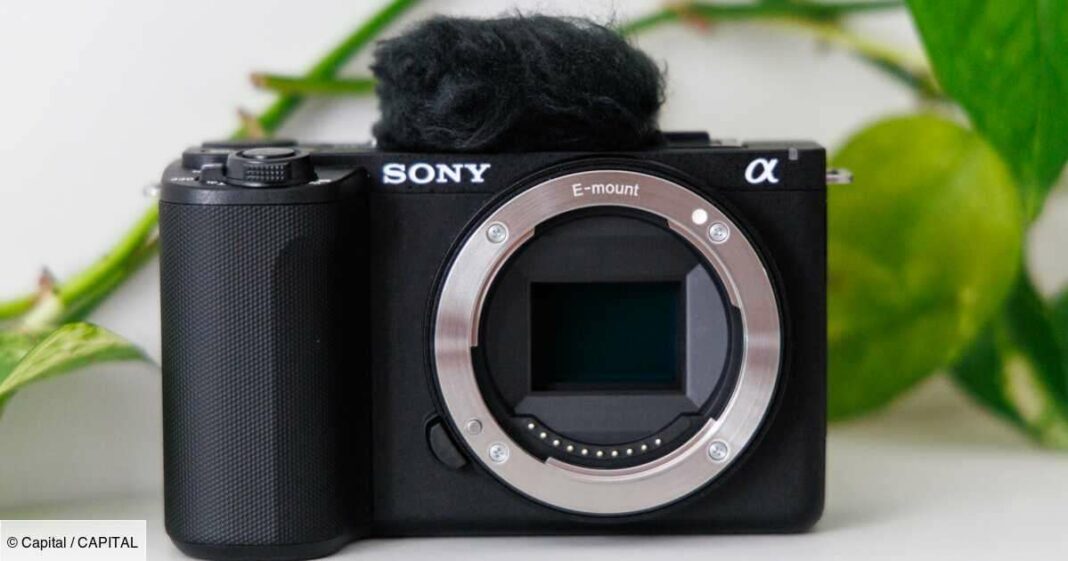Sony’s ZV-E10 Mark II enhances video creation with a 26 MP APS-C sensor, dual Bionz XR processors, and improved battery life. It features a comfortable grip, user-friendly controls, and versatile shooting options, including 4K at 60 fps. While lacking a mechanical shutter and stabilization, it excels in autofocus and image quality, with impressive dynamic range and E-mount compatibility. The camera supports various accessories, making it a robust choice for content creators and videographers.
Introduction to the Sony ZV-E10 Mark II
Launched in 2020 with the compact ZV-1, the Sony ZV series has seen significant growth, introducing a range of models designed specifically for seamless video creation. The latest addition, the ZV-E10 Mark II, boasts enhancements such as a new sensor, improved processor, and upgraded battery. Notably, its predecessor remains a top pick among hybrid cameras. If you’re in the market for a new lens, explore our curated selection of the finest E-mount lenses available.
Design Updates and Ergonomics
The ZV-E10 Mark II maintains a similar size to its predecessor, yet features a more pronounced grip for enhanced handling and a more comfortable texture. Subtle ergonomic changes have been made, such as relocating the power switch from the top to the front of the camera for easier access.
Additionally, the top control now has a user-friendly three-position switch for toggling between photo, video, and S&Q modes, a change seen in other Sony models. The button layout on the back remains unchanged, while connectivity options are consistent, featuring an HDMI-D port, USB-C, headphone and microphone jacks, and a single SD UHS-II memory card slot, as well as Bluetooth and Wi-Fi capabilities.
Following in the footsteps of its predecessors, the ZV-E10 Mark II includes a three-capsule microphone, adjustable for sound isolation from various directions, complemented by a practical windscreen. Lacking an electronic viewfinder, the camera relies on an improved screen, offering enhanced definition while still sitting on the lower end of the market spectrum. The central ball joint allows for versatile screen orientation, giving access to the device menu with the latest Sony interface and a variety of touch shortcuts during recording, albeit with a slightly overwhelming number of options.
Lastly, the ZV-E10 Mark II replaces the older NP-FW50 battery with the more robust NP-FZ100, which is already utilized in other Sony hybrid models. This upgrade significantly boosts battery life, allowing for up to 610 shots compared to the previous 440 shots, making it a reliable choice for extended shooting sessions.
Impressive Features for Videographers
Equipped with a 26 MP APS-C sensor from the A6700 and dual Bionz XR processors, the ZV-E10 Mark II enhances image quality and overall performance. However, it does lose the mechanical shutter found in its predecessor, which may lead to banding issues under artificial lighting conditions. While it retains a flash shoe, the sync speed is limited to 1/30s.
The absence of mechanical stabilization poses challenges for handheld photography, particularly during short exposure times. Nonetheless, the software-based active stabilization does its best, although it may result in noticeable image cropping and shake during movement. On the bright side, the ZV-E10 Mark II can shoot in 4K at 60 fps without cropping, a vast improvement over the previous model’s 30 fps limit. Creative options such as custom LUTs and a Cinematic Vlog mode enhance the user experience, allowing for vertical filming tailored for social media platforms.
Similar to its predecessors, this model includes dedicated buttons for bokeh control and product presentation, facilitating smooth autofocus transitions between the subject and the product being showcased. Live streaming capabilities are also supported through its Wi-Fi connection, making it a versatile tool for content creators.
Exceptional Autofocus and Image Quality
The ZV-E10 Mark II inherits the sophisticated sensor and dual Bionz XR processor from the A6700, yet it does not include the AI chip for enhanced subject recognition. Despite this limitation, the autofocus system remains highly responsive, with 759 analysis points ensuring accurate tracking of humans, pets, and birds. While it may lack the extensive features of newer models, its overall performance in subject detection and tracking is commendable.
In terms of image quality, the ZV-E10 Mark II stands out with its E-mount compatibility, allowing for a diverse range of lenses, paired with a high-quality APS-C sensor that excels in producing images with a shallow depth of field. The dynamic range is impressive, enabling extensive editing capabilities on RAW files. The ISO range is commendable, extending from 100 to 32,000, and can be expanded further, making it suitable for various lighting conditions.
Accessory Options and Repairability
The ZV-E10 Mark II not only supports a wide array of E-mount lenses but also benefits from a comprehensive ecosystem of accessories. Sony offers a wireless shooting grip designed for face-to-camera shots, equipped with direct access to zoom functions and trigger buttons, also functioning as a tripod.
Furthermore, Sony provides a variety of compatible microphones for enhanced audio capture through its multi-interface shoe. While the camera’s repairability is not specified, Sony adheres to warranty regulations, offering a 24-month compliance warranty against hidden defects, with additional support for troubleshooting and authorized repair centers available online.
